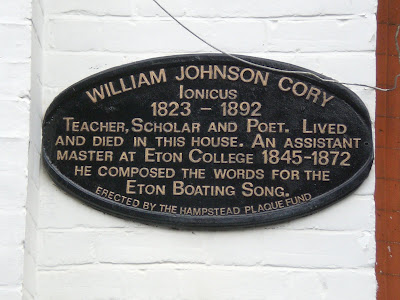 This Sunday I was at the 70th anniversary celebrations at Belsize Square synagogue.
This Sunday I was at the 70th anniversary celebrations at Belsize Square synagogue.It was moving, fun, beautiful and spiritiual.
I wanted to share with readers some of the pictures that I took after the celebration. Including the small plaque that celebrated the 60th anniversary.
It's probably easiest if the history of the synagogue is told in their own words:
http://www.synagogue.org.uk/
Belsize Square Synagogue was founded in 1939 by refugees from Central Europe who came from the continental Liberal Jewish Movement. While those of Orthodox or Reform background could integrate into already well established English congregations, there existed nothing in this country, no congregations, no synagogues which could provide either the spiritual background or form of worship to which they had been accustomed. English Liberalism, on the other hand, was far too radical for them.
A few months before the outbreak of the last war, some men, chiefly from Berlin and Frankfurt-on-Main, got together and, with the help of Miss Lily Montagu, one of the founders of the English Liberal Movement and a lay Minister in the Liberal Jewish Synagogue, secured the use of Montefiore Hall (attached to the Liberal Jewish Synagogue) for Friday evening Services.

 The first of these Services took place on 24th March, 1939 and was held in the continental Liberal manner. There was no formal congregational organisation. Each Sabbath Eve Service was conducted by a different Rabbi and Cantor recently arrived here. Some of them subsequently emigrated overseas, such as the late Rabbi Lemle who founded a similar congregation in Sao Paulo, Brazil. Others, such as the late Rabbis ltaliener and Van der Zyl, became Ministers in the Reform Movement.
The first of these Services took place on 24th March, 1939 and was held in the continental Liberal manner. There was no formal congregational organisation. Each Sabbath Eve Service was conducted by a different Rabbi and Cantor recently arrived here. Some of them subsequently emigrated overseas, such as the late Rabbi Lemle who founded a similar congregation in Sao Paulo, Brazil. Others, such as the late Rabbis ltaliener and Van der Zyl, became Ministers in the Reform Movement.It was in June 1939 that what was more or less an ad hoc state of affairs became organised by the formation of the New Liberal Jewish Association with the Hon. Lily Montagu, J. P. as its first Chairman, and Rabbi Dr. Georg Salzberger (formerly Frankfurt-on-Main) and Cantor Magnus Davidsohn (formerly Berlin) its first permanent Ministers. It was affiliated to the Jewish Religious Union (now Union of Liberal and Progressive Synagogues). Rooms were rented in the Swiss Cottage area.

 In January 1940 the word "Association" was changed to the more descriptive "Congregation" and so it remained during Miss Montagu's life-time, although the words "New Liberal" were widely considered misleading. It was not until June 1971 that the congregation assumed its present title.
In January 1940 the word "Association" was changed to the more descriptive "Congregation" and so it remained during Miss Montagu's life-time, although the words "New Liberal" were widely considered misleading. It was not until June 1971 that the congregation assumed its present title.In 1951 it acquired its own home, a former vicarage in Belsize Square which was converted to accommodate a modest synagogue seating 80 and communal offices, as well as religion school.















